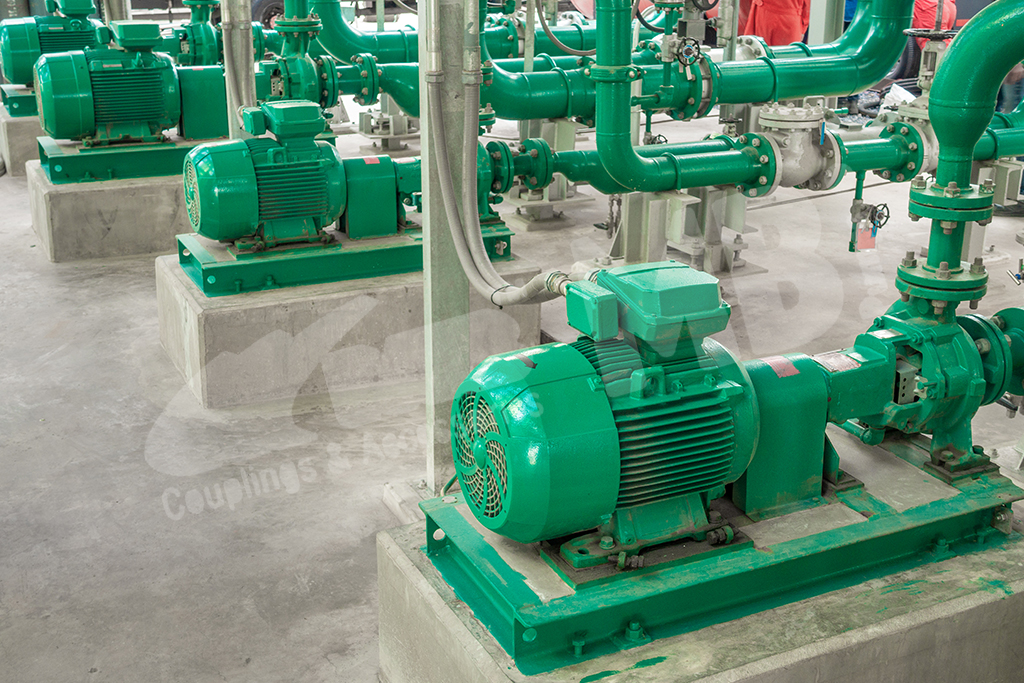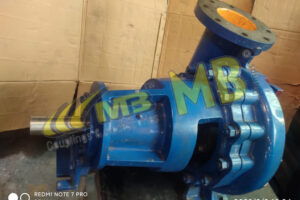In order to deliver water for agricultural irrigation, water pumps are often used in agriculture. These apparatuses transfer liquids or gases from one location to another using mechanical force. Pumps may move water from a low-pressure area to a high-pressure one, allowing it to flow against the force of gravity. This is done by raising the fluid’s pressure.
In order to assure longevity, pumps are often made out of strong metals or alloys such stainless steel, chromium, or nickel. They can be propelled by a variety of strategies, including electricity, wind, or physical labour. MB Exports are the best Dewatering Pump Manufacturers & Suppliers in India
Pumps are crucial tools for irrigating crops due to their significance in agriculture. There are many different kinds of agricultural pumps available for irrigation, some of which are tailored to satisfy particular agricultural demands.
Pump Types Used in the Agriculture Industry
Positive Displacement Pumps
Positive displacement pumps, as its name suggests, use mechanical energy to transport water from one location to another. The fluid enters through the suction valve and exits by the outlet valve, and they are made up of suction and discharge sides. Fluid is trapped in a compartment by motion in a pump, which subsequently releases it through a nozzle. The pumps are constant volume pumps because they move a fixed volume of fluid during each operating cycle.
However, because positive displacement pumps are capable of handling fluids with extremely high pressures, a safety valve is essential. They cannot pump water from deeper depths and are normally controlled manually. They may, however, be used to any kind of crop.
Positive displacement pumps advantages.
Positive displacement water pumps are appropriate for a variety of applications due to their benefits, which include:
- providing extremely high pressures.
- handling fluids with a range of viscosities, with a higher flow rate as the fluid viscosity decreases.
- being highly effective.
- maintaining a consistent flow rate despite pressure variations.
- being both incredibly affordable and durable.
- handling liquid flow contamination from air or gas.
Positive Displacement Pump Applications
Many other sectors, including agriculture, use these pumps. These pumps are frequently used for things like:
- Water from a low-pressure source can be pumped up to a higher height by irrigation operations.
- using high-force cleaning, oils, and spray paints in numerous sectors.
- Positive displacement pumps, which are used to transport gas and oil, are capable of continuously delivering high pressure.
- These pumps are excellent for processing chemicals because they can handle corrosive, abrasive, and viscous fluids.
- Because these pumps can handle thick, solid-laden fluids that would clog other pump types, they are often used to transport slurry or garbage in waste treatment facilities.
Dynamic Pumps
Another type of pump that is frequently used in agriculture and other sectors is the dynamic pump. Dynamic pumps, in contrast to positive displacement pumps, raise the fluid’s kinetic energy by mechanical motion. The centrifugal pump is the most popular form of dynamic pump. Its revolving impeller accelerates the fluid and guides it into the outlet pipe.
Dynamic pumps have the ability to handle fluids containing solid impurities, such as sand or salt water, which is one of its advantages. Additionally, they are frequently equipped with filters to get rid of these impurities before pumping the fluid. Dynamic pumps may therefore be employed in agriculture for a variety of tasks, such as watering plants and moving liquid between tanks.
Centrifugal pumps
Another type of pump used in agriculture, notably for irrigation, is the centrifugal pump. A revolving impeller is used to push fluid through the device. The fluid is drawn by the impeller, which uses centrifugal force to discharge it through the discharge valve.
Typically immersed in water, centrifugal pumps use the rotation of the impeller to transmit kinetic energy from the motor to the fluid. Electrical energy, which can originate from a variety of sources including the public power grid, solar panels, wind turbines, or hydroelectric generators, is typically used to operate these pumps.
1. Submersible pumps
Usually found in a well, lake, or pond, submersible water pumps are a form of centrifugal pump that are situated below the water’s surface. These pumps don’t need priming because they are made with watertight components.
Depending on how many impellers they have, submersible pumps can be either single- or multi-stage. Higher pressures and flow rates may be produced using multi-stage submersible pumps, which are made up of many single-stage pumps connected in series.
Although solar, wind, or hydro energy may also be used to power submersible pumps, this is less common. These pumps are renowned for their great efficiency and dependability and are particularly helpful when the water source is shallow.
2. Turbine pumps
Both above-ground and underwater installations of turbine pumps are possible. They frequently work with ponds, lakes, or wells. The most popular kind is a vertical turbine pump. They are less efficient than submersible pumps, though. Solar, wind, hydropower, and other sources of renewable energy may all be used to power turbine pumps. Typically, they can be utilised when the water source’s level is low.
3. Centrifugal pumps with end-suction
Due to its effectiveness and ability to manage a range of flow rates and pressures, end-suction centrifugal pumps are also often employed in irrigation. Because they contain a single impeller that is utilised to enhance the fluid’s velocity, they are sometimes referred to as single-stage pumps. For small to medium irrigation applications, including watering gardens, lawns, or small agricultural areas, end-suction pumps are frequently employed. They may be powered by diesel or electric engines and are simple to install, maintain, and repair.
4. Jet Pumps
When the water level is too low for other types of pumps to work, jet pumps—also known as hydraulic lifts or surface pumps—are frequently used to pump water from wells or other water sources. They launch a water jet at high speed, which produces a small vacuum and sucks water up through a suction pipe. They can be helpful in some instances when other pumps cannot be utilised, despite being less effective and having a lower flow rate than other pumps.
Centrifugal pumps have several benefits.
- They have a basic design.
- They don’t leak as often.
- They have a less frictional loss.
Centrifugal pumps are frequently used for irrigation.
- They may work with hazardous liquids.
- They find application in mining, petrochemicals, and home appliances.
- They are commonly seen in hydraulic control systems.
- They are used to fill water tanks by firemen and in residential structures.
Read more about water removal challenges on construction sites
Conclusion
MB Exports are the Best Dewatering Pump Manufacturers in India. So, when selecting water pumps, you may go with centrifugal pumps, which are the most frequent kind used in irrigation and other sectors owing to its simple design, low friction loss, and low danger of leakage. Submersible and turbine pumps are also effective solutions for undersea water sources. End-suction centrifugal and jet pumps have limits, although they can be effective in some situations. Pumps of various sorts have distinct benefits and are best suited for certain applications. As a renowned pump manufacturer, we can supply a variety of pumps to meet your needs.




